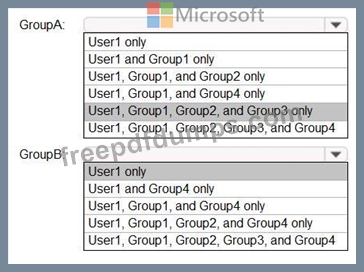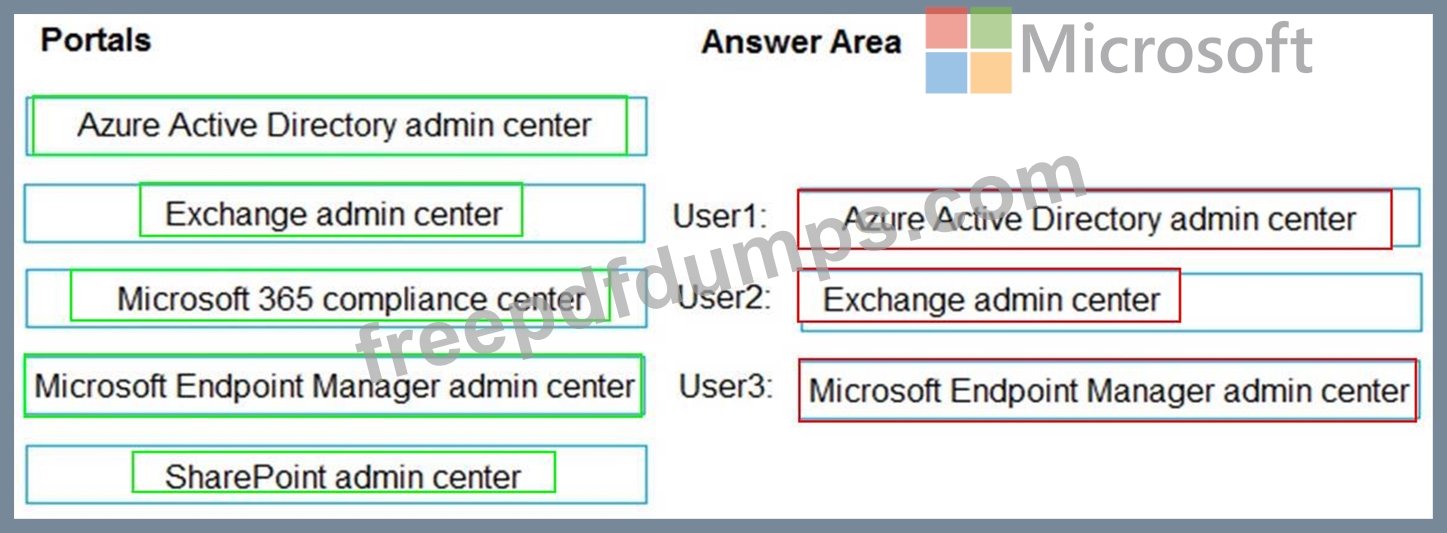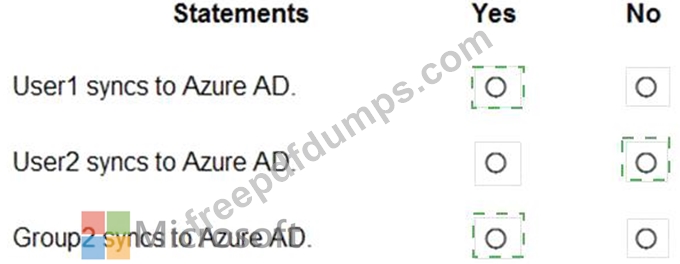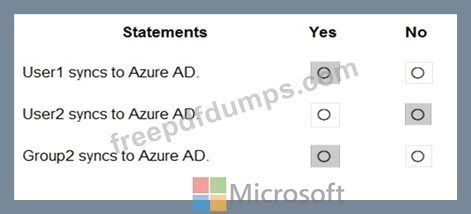SC-300 Exam Question 21
You have an Azure Active Directory (Azure AD) tenant that contains a user named User1 and the groups shown in the following table.

In the tenant, you create the groups shown in the following table.

Which members can you add to GroupA and GroupB? To answer, select the appropriate options in the answer area.
NOTE: Each correct selection is worth one point.
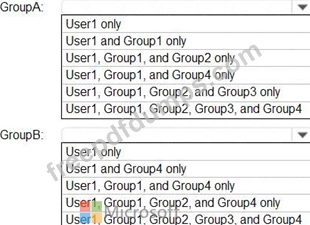

In the tenant, you create the groups shown in the following table.

Which members can you add to GroupA and GroupB? To answer, select the appropriate options in the answer area.
NOTE: Each correct selection is worth one point.

SC-300 Exam Question 22
You have a Microsoft 365 E5 subscription that contains three users named User1, User2, and User3.
You need to configure the users as shown in the following table.

Which portal should you use to configure each user? To answer, drag the appropriate portals to the correct users. Each portal may be used once, more than once, or not at all. You may need to drag the split bar between panes or scroll to view content.
NOTE: Each correct selection is worth one point.

You need to configure the users as shown in the following table.

Which portal should you use to configure each user? To answer, drag the appropriate portals to the correct users. Each portal may be used once, more than once, or not at all. You may need to drag the split bar between panes or scroll to view content.
NOTE: Each correct selection is worth one point.

SC-300 Exam Question 23
You have an Azure AD tenant that contains the users shown in the following table.

In Azure AD Identity Protection, you configure a user risk policy that has the following settings:
* Assignments:
o Users: Group1
o User risk: Low and above
* Controls:
o Access: Block access
* Enforce policy: On
In Azure AD Identity Protection, you configure a sign-in risk policy that has the following settings:
* Assignments:
o Users: Group2
o Sign-in risk: Low and above
* Controls:
o Access: Require multi-factor authentication
* Enforce policy. On
the following settings:
ng settings:
For each of the following statements, select Yes if the statement is true. Otherwise, select No.
NOTE: Each correct selection is worth one point.


In Azure AD Identity Protection, you configure a user risk policy that has the following settings:
* Assignments:
o Users: Group1
o User risk: Low and above
* Controls:
o Access: Block access
* Enforce policy: On
In Azure AD Identity Protection, you configure a sign-in risk policy that has the following settings:
* Assignments:
o Users: Group2
o Sign-in risk: Low and above
* Controls:
o Access: Require multi-factor authentication
* Enforce policy. On
the following settings:
ng settings:
For each of the following statements, select Yes if the statement is true. Otherwise, select No.
NOTE: Each correct selection is worth one point.

SC-300 Exam Question 24
You need to create the LWGroup1 group to meet the management requirements.
How should you complete the dynamic membership rule? To answer, drag the appropriate values to the correct targets. Each value may be used once, more than once, or not at all. You many need to drag the split bar between panes or scroll to view content.
NOTE: Each correct selection is worth one point.

How should you complete the dynamic membership rule? To answer, drag the appropriate values to the correct targets. Each value may be used once, more than once, or not at all. You many need to drag the split bar between panes or scroll to view content.
NOTE: Each correct selection is worth one point.

SC-300 Exam Question 25
Your network contains an on-premises Active Directory domain named contoso.com. The domain contains the objects shown in the following table.

You install Azure AD Connect. You configure the Domain and OU filtering settings as shown in the Domain and OU Filtering exhibit. (Click the Domain and OU Filtering tab.)

You configure the Filter users and devices settings as shown in the Filter Users and Devices exhibit. (Click the Filter Users and Devices tab.)

For each of the following statements, select Yes if the statement is true. Otherwise, select No.
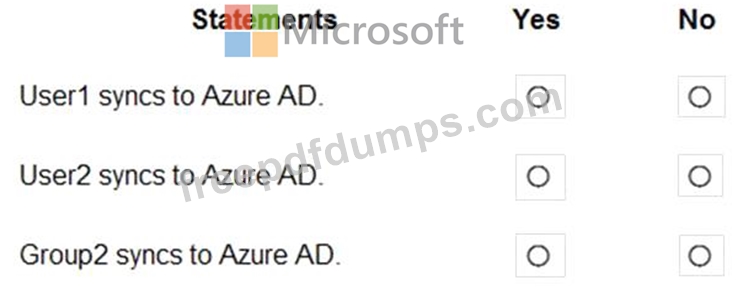

You install Azure AD Connect. You configure the Domain and OU filtering settings as shown in the Domain and OU Filtering exhibit. (Click the Domain and OU Filtering tab.)

You configure the Filter users and devices settings as shown in the Filter Users and Devices exhibit. (Click the Filter Users and Devices tab.)

For each of the following statements, select Yes if the statement is true. Otherwise, select No.




